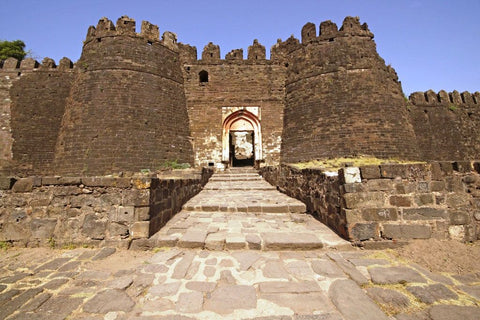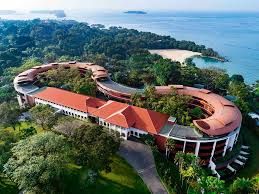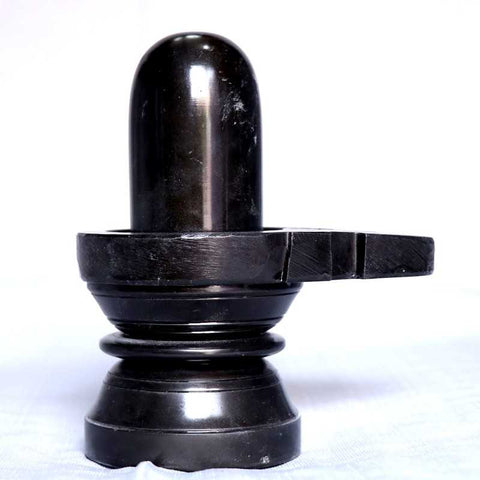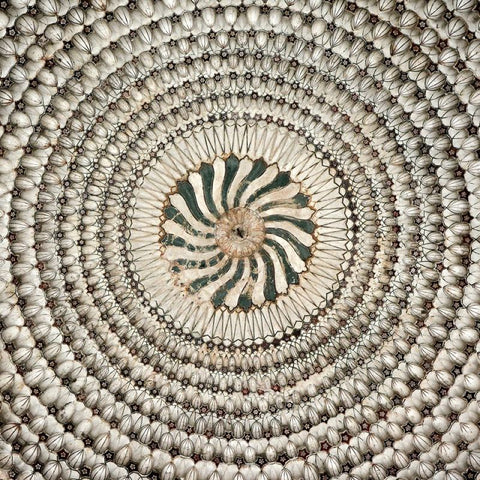
Far off perspective on Devagiri or Daulatabad Fort.
The region of the city the slope post of Devagiri (now and then Latinised to Deogiri). It remains on a cone shaped slope, around 200 meters high. A great part of the lower slants of the slope has been removed by Yadava line rulers to
leave 50-meter vertical sides to improve resistances. The post is a position of remarkable quality. The main methods for access to the summit is by a restricted scaffold, with the entry for not multiple individuals side by side,
what's more, a long display, unearthed in the stone, which has, generally, a progressive upward incline. About halfway along this display, the entrance exhibition has soak stairs, the highest point of which is secured by a grinding foreordained in time of war to frame the hearth of an enormous flame continued consuming by the battalion above. At the summit, and at interims on the slant, are examples of gigantic old gun looking out over the encompassing farmland.
Likewise at the halfway, there is a cavern passage intended to befuddle the foes.
The stronghold had the accompanying specialities which are recorded alongside their points of interest :
No different exit from the stronghold, just one passageway/exit - This is intended to befuddle the aggressors to drive profound into the post looking for an exit, at their very own risk. No parallel doors - This is intended to break the force of the attacking armed force. Likewise, the banner pole is on the
left slope, which the adversary will attempt to give in, therefore will consistently turn left. Yet, the genuine entryways of the post are on the
right and the bogus ones on the left, therefore confounding the adversary.
Spikes on the entryways - In the time before explosive, inebriated elephants were utilized as a battering ram to tear open the entryways. The nearness of spikes guaranteed that the elephants passed on of damage.
Complex game plan of gateways, bended dividers, false entryways - Designed to confound the adversary, false, however well-structured doors on the left side tricked the aggressors in and caught them inside, in the long run bolstering them to crocodiles.
The slope is molded like a smooth tortoise back - this averted the utilization of mountain reptiles as climbers, since they can't adhere to it.
The City
Devagiri (190 57' N; 750 15' E) is situated a good ways off of 15 km northwest of
Aurangabad, the area base camp and halfway to Ellora gathering of caverns. The first far reaching capital city is currently for the most part empty and has been diminished to a town. A lot of its survival relies upon the vacationers to the old city and the adjoining fortress.
History
The Mughal Army catches Devagiri.
Catch of Devagiri Fort in 1633.
The site had been involved since at any rate 100 BCE, and now has stays of Hindu and Buddhist sanctuaries like those at Ajanta and Ellora. The city is said to have been established c. 1187 by Bhillama V, a Yadava ruler who repudiated his faithfulness to the Chalukyas and set up the intensity of the Yadava line in the west. During the standard of the Yadava ruler Ramachandra, Alauddin Khalji of Delhi Sultanate assaulted Devagiri in 1296, driving the Yadavas to pay a robust tribute. At the point when the tribute installments ceased, Alauddin sent a second undertaking to Devagiri in 1308, compelling Ramachandra to turn into his vassal.
In 1328, Muhammad canister Tughluq of Delhi Sultanate moved the capital of his kingdom to Devagiri, and renamed it Daulatabad. A few researchers ague that the thought behind moving the capital was sound, since it lay pretty much in the focal point of the kingdom, and topographically verified the capital from the north-west wilderness assaults. In the Daulatabad stronghold, he found the region dry and dry. Henceforth he fabricated an immense supply for water stockpiling and
associated it with a distant stream. He utilized siphon framework to top off the store. Be that as it may, his capital-move methodology bombed hopelessly because of absence of use and different variables. Henceforth he moved back to Delhi and earned him the moniker "Frantic King". The following significant occasion in the Daulatabad fortress timetable was the development of the Chand Minar by the Bahmani ruler Hasan Gangu Bahmani, otherwise called Ala-ud-Din Bahman Shah (r. 3 August 1347 – 11 February 1358).
Hasan Gangu manufactured the Chand Minar as an imitation of the Qutb Minar of Delhi, of which he was an extraordinary enthusiast of. He utilized Iranian designers to assembled the Minar who utilized Lapis Lazuli and Red Ochre for shading. Right now, the Minar is outside the field of play for the voyagers, as a result of a suicide case.
As we move further into the fortress, we can see the Chini Mahal, a VIP jail worked by Aurangzeb. In this jail, he kept Abul Hasan Tana Shah of the Qutb Shahi Dynasty of Hyderabad. The forerunners of Abul Hasan Tana Shah, the last Qutub Shahi lord are covered in puzzle. Albeit a brother of the Golconda royals, he spent his developmental years as a follower of eminent Sufi holy person Shah Raju Qattal, driving an austere presence away from the pageantry and greatness of sovereignty. Shah Raziuddin Hussaini, famously known as Shah Raju, was
held in high regard by both the respectability and ordinary citizens of Hyderabad. Abdullah Qutub Shah, the seventh ruler of Golconda was among his most impassioned fans. He kicked the bucket in jail leaving no male beneficiary to the position of royalty. In this Chini Mahal, Sambhaji maharaj, child of Shivaji maharaj was kept.
The vast majority of the present-day fortress was developed under the Bahmanis and the Nizam Shahs of Ahmadnagar. The Mughal Governor of the Deccan under Shah Jahan, caught the fortification in 1632 and detained the Nizam Shahi sovereign Husain Shah.
Landmarks
The external divider, 2.75 miles (4.43 km) in boundary, when encased the antiquated city of Devagiri and among this and the base of the upper fortress are three lines of safeguards. Alongside the fortresses, Devagiri contains a few striking landmarks, of which the boss are the Chand Minar and the Chini Mahal. The Chand Minar is a pinnacle 210 ft (64 m). high and 70 ft (21 m). in boundary at the base, and was initially secured with wonderful Persian coated tiles. It was raised in 1445 by Ala-ud-clamor Bahmani to celebrate his catch of the post. The Chini Mahal (truly: China Castle), is the ruin of a structure once of extraordinary excellence. In it, Abul Hasan Tana Shah, the remainder of the Qutb Shahi
rulers of Golconda, was detained by Aurangzeb in 1687.
Transport
Devagiri is in the edges of Aurangabad, and is on the Aurangabad - Ellora street (National Highway 2003). Aurangabad is very much associated by street and 20 km away from Devagiri.
Rail Transport
Daulatabad railroad station is situated on the Manmad-Purna segment of South Central Railways and furthermore on the Mudkhed-Manmad area of the Nanded Division of South Central Railway. Until revamping in
2005, it was a piece of the Hyderabad Division Aurangabad is a noteworthy station close to Devagiri. The Devagiri Express routinely works among Mumbai and Secunderabad by means of Aurangabad, Maharashtra









